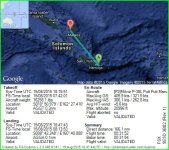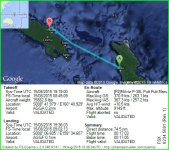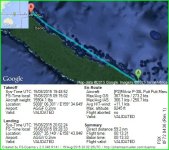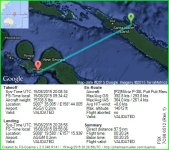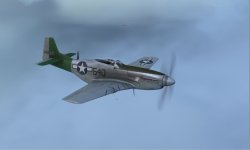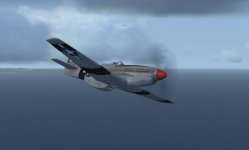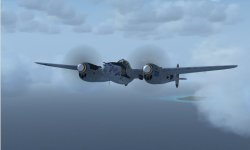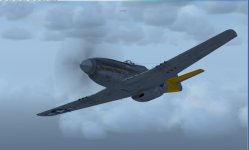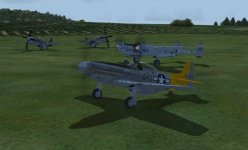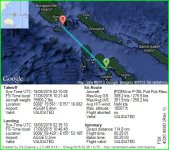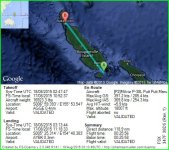You are using an out of date browser. It may not display this or other websites correctly.
You should upgrade or use an alternative browser.
You should upgrade or use an alternative browser.
MM's Mission to Mindanao
- Thread starter MM
- Start date
MM
Charter Member
Attachments
MM
Charter Member
Attachments
MM
Charter Member
Attachments
MM
Charter Member
Attachments
Had to abort. Active Sky connection was broken. (Lost the high crosswinds and storms in FSX default and I thought the weather was too nice!)...
Definitely something wrong when FS says the weather is nice...!
MM
Charter Member
A few snapshots of a small kickoff event on multiplayer. (DC was in FSX Steam, but technology prevents a FSX Classic and FSX-SE connection.)
First, the four starters at Santa Anna on FSX. Then single views of Jeff, Mike (P-38), Ron and Josh.
First, the four starters at Santa Anna on FSX. Then single views of Jeff, Mike (P-38), Ron and Josh.
Attachments
MM
Charter Member
Then a few action shots. (1) Josh landing at Auki (AGGA). Note the windsock showing the strong crosswinds. (2) Ron circling to land at Auki. (3) Josh and Mike at Maringe (AGGF) waiting for Ron – who took a different approach. (4) Mike trying to fly straight and level in the turbulence over Munda. And (5) Jeff landing smoothly at Munda (AGGM).
Attachments
-
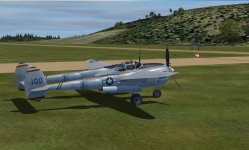 SWPAC2_AGGM Jeff smooth landing at Munda.jpg66.8 KB · Views: 0
SWPAC2_AGGM Jeff smooth landing at Munda.jpg66.8 KB · Views: 0 -
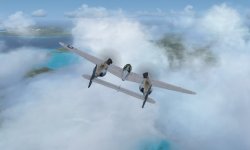 SWPAC2_AGGM Rocking-n-Rolling in Turbulence over Munda.jpg29.8 KB · Views: 0
SWPAC2_AGGM Rocking-n-Rolling in Turbulence over Munda.jpg29.8 KB · Views: 0 -
 SWPAC2_AGGF Josh and Mike waiting for Ron.jpg63.1 KB · Views: 0
SWPAC2_AGGF Josh and Mike waiting for Ron.jpg63.1 KB · Views: 0 -
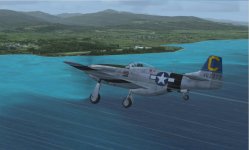 SWPAC2_AGGA Ron on base.jpg53.6 KB · Views: 0
SWPAC2_AGGA Ron on base.jpg53.6 KB · Views: 0 -
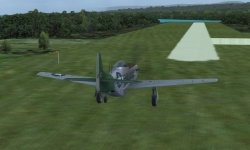 SWPAC2_AGGA Josh on finals_note windsock.jpg57.7 KB · Views: 0
SWPAC2_AGGA Josh on finals_note windsock.jpg57.7 KB · Views: 0
MM
Charter Member
Up and down through the clouds safely into AGGE.
http://fs-duenna.com/flights/ShowFlight.php?detail=flight&value=IhZfZ4BMhq2wSrmAzDfuWHUwpI
http://fs-duenna.com/flights/ShowFlight.php?detail=flight&value=IhZfZ4BMhq2wSrmAzDfuWHUwpI
Attachments
MM
Charter Member
And then safely down at Buka where the possibility of a comfortable bar seem promising.
http://fs-duenna.com/flights/ShowFlight.php?detail=flight&value=fSBrioSZYA8ANcgQxOtoEe5i0c
http://fs-duenna.com/flights/ShowFlight.php?detail=flight&value=fSBrioSZYA8ANcgQxOtoEe5i0c
Attachments
MM
Charter Member
Some Kodaks of the trip from Munda to Buka. The skies were turbulent all throughout – as the entire SWPAC 2.0 pilot roster can attest.
Below, the Lockheed's radical design, penned by Hall Hibbard and Kelly Johnson, flies over the clouds and jungle of the Slot. The first part of the trip was accompanied by an undercast that made for poor sightseeing. But the occasional glimpses of the islands along the Slot were enough to make VFR navigation doable.

Then the familiar landing at Ballalae. The Japanese ran a major airbase on the island with some 95 aircraft based here during 1943. After the fall of Singapore, some 517 British POWs were transferred here to build the airfield. Many died of starvation and disease and Allied bombing before March, 1943, when the survivors were summarily executed and buried in a mass grave.
On April 18, 1943, the brilliant Admiral Isoroku Yamamoto was scheduled to land here on a morale-building inspection tour. When his radio communications were deciphered by US Intelligence on April 14, Roosevelt's order was "Get Yamamoto." Four days later, eighteen P-38G pilots of the 347th Fighter Group flew a low-level mission out over the Coral Sea from Guadalcanal to the Ballalae area. Taking advantage of Yamamoto's legendary punctuality, they successfully intercepted and shot down Yamamoto's Mitsubishi G4M1 Betty over southern Bougainville. In some ways, this was a psychological turning point in the Pacific war.
The airport at Ballalae is now in bi-weekly use. However, "no one lives on Ballalae, and the rest of the island has reverted to dense jungle. Full of swamp and dense jungle, Ballalae is notorious for scrub typhus, and other varieties of insects, diseases and dangers. Two anthologists stayed overnight on the island and died soon afterwards from the tropical aliments. Others report strange rashes, bites and infections from insects of the island. " Pacific Wrecks

Not wishing to linger, I quickly took off for Buka…but found myself unable to gain any airspeed. Gear and flaps were up (duh!), props were fine and manifold pressure high. This made no sense…but wait…how about the dive flaps? Yup. Somehow I had inadvertently triggered the dive flaps. Up they went and all returned to normal.
Flew up over the hills of Bougainville, passing Empress Augusta Bay (below). This was the spot where the US Marines landed at Cape Torokina in November 1943. The Marines, then the Army, and then the Australian Army established and maintained a wide perimeter in which four airfields were constructed. The mission was to destroy the Japanese naval and air power at Rabaul. (The legendary Jolly Rogers, VF-17 of Tommy Blackburn, flew from Piva field here.) During this time, the Japanese Army continued to hold most of Bougainville. The two sides were stalemated – with the Japanese surrendering only when the war formally ended.

Empress Augusta Bay constitutes an important site for local fishermen. It was the pollution of the Bay from the huge Panguna Mine that prompted a brutal ten-year rebellion with the local Bougainville forces seeking independence from Papua New Guinea. Although a ceasefire has lasted a decade now, the matter remains to be settled. Armed guerilla forces continue to control high mountain jungle areas that include the Panguna Mine.
Below, the Lockheed's radical design, penned by Hall Hibbard and Kelly Johnson, flies over the clouds and jungle of the Slot. The first part of the trip was accompanied by an undercast that made for poor sightseeing. But the occasional glimpses of the islands along the Slot were enough to make VFR navigation doable.

Then the familiar landing at Ballalae. The Japanese ran a major airbase on the island with some 95 aircraft based here during 1943. After the fall of Singapore, some 517 British POWs were transferred here to build the airfield. Many died of starvation and disease and Allied bombing before March, 1943, when the survivors were summarily executed and buried in a mass grave.
On April 18, 1943, the brilliant Admiral Isoroku Yamamoto was scheduled to land here on a morale-building inspection tour. When his radio communications were deciphered by US Intelligence on April 14, Roosevelt's order was "Get Yamamoto." Four days later, eighteen P-38G pilots of the 347th Fighter Group flew a low-level mission out over the Coral Sea from Guadalcanal to the Ballalae area. Taking advantage of Yamamoto's legendary punctuality, they successfully intercepted and shot down Yamamoto's Mitsubishi G4M1 Betty over southern Bougainville. In some ways, this was a psychological turning point in the Pacific war.
The airport at Ballalae is now in bi-weekly use. However, "no one lives on Ballalae, and the rest of the island has reverted to dense jungle. Full of swamp and dense jungle, Ballalae is notorious for scrub typhus, and other varieties of insects, diseases and dangers. Two anthologists stayed overnight on the island and died soon afterwards from the tropical aliments. Others report strange rashes, bites and infections from insects of the island. " Pacific Wrecks

Not wishing to linger, I quickly took off for Buka…but found myself unable to gain any airspeed. Gear and flaps were up (duh!), props were fine and manifold pressure high. This made no sense…but wait…how about the dive flaps? Yup. Somehow I had inadvertently triggered the dive flaps. Up they went and all returned to normal.
Flew up over the hills of Bougainville, passing Empress Augusta Bay (below). This was the spot where the US Marines landed at Cape Torokina in November 1943. The Marines, then the Army, and then the Australian Army established and maintained a wide perimeter in which four airfields were constructed. The mission was to destroy the Japanese naval and air power at Rabaul. (The legendary Jolly Rogers, VF-17 of Tommy Blackburn, flew from Piva field here.) During this time, the Japanese Army continued to hold most of Bougainville. The two sides were stalemated – with the Japanese surrendering only when the war formally ended.

Empress Augusta Bay constitutes an important site for local fishermen. It was the pollution of the Bay from the huge Panguna Mine that prompted a brutal ten-year rebellion with the local Bougainville forces seeking independence from Papua New Guinea. Although a ceasefire has lasted a decade now, the matter remains to be settled. Armed guerilla forces continue to control high mountain jungle areas that include the Panguna Mine.
MM
Charter Member
After flying at altitude, I descended "with all deliberate speed" skimming the mountainsides on the northern end of Bougainville almost as though it were a downhill ski run. Then a quick turn to bleed off speed, lower gear and flaps, and stick a landing.

The approach into Buka gave a welcome sight of civilization. At the left of the airport, on the waterway, stands the charming Reasons Bar & Grill. Just the spot for a bit of refreshment and clean accommodations.

Of course, there were substantial crosswinds at the field, as evinced by the stiff windsock in the picture above. This challenge of crabbing into stiff crosswinds is now familiar to all our SWPAC pilots.

No worries.

The approach into Buka gave a welcome sight of civilization. At the left of the airport, on the waterway, stands the charming Reasons Bar & Grill. Just the spot for a bit of refreshment and clean accommodations.

Of course, there were substantial crosswinds at the field, as evinced by the stiff windsock in the picture above. This challenge of crabbing into stiff crosswinds is now familiar to all our SWPAC pilots.

No worries.

